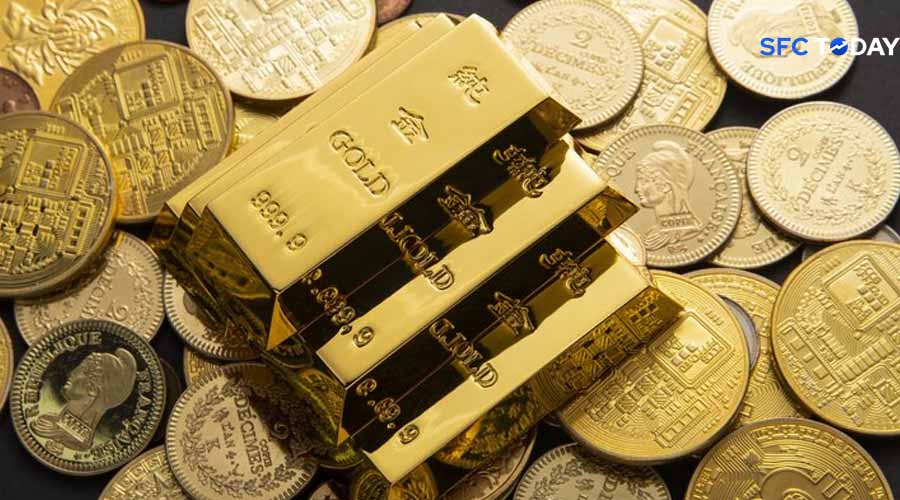Global economic volatility has historically driven investors towards safe-haven assets, with gold being a prime choice
In recent times, Indian investors have been increasingly gravitating towards gold as a preferred investment avenue. This trend is influenced by a confluence of factors, including economic uncertainties, soaring gold prices, robust demand for gold-backed financial products, and strategic moves by central banks.
Economic Uncertainty and Safe-Haven Appeal
Global economic volatility has historically driven investors towards safe-haven assets, with gold being a prime choice. The announcement of potential tariffs by the U.S. administration in February 2025 has exacerbated fears of a global trade war, leading to concerns about economic stability. Such uncertainties have prompted Indian investors to seek refuge in gold, aiming to hedge against potential market downturns and currency fluctuations.
Surging Gold Prices
The price of gold has witnessed a significant upward trajectory. As of February 20, 2025, 24-carat gold in India is priced at ₹87,833 per 10 grams, reflecting an increase of ₹700 from the previous day. This surge is not isolated to the Indian market; globally, spot gold prices have reached $2,931.10 per ounce, driven by economic growth concerns and policy uncertainties. The escalating prices, while making gold more expensive, have not deterred investors. Instead, the upward momentum reinforces gold’s appeal as a valuable asset, prompting more investments despite the higher costs.
Robust Demand for Gold-Backed Financial Products
The heightened interest in gold has translated into increased demand for gold-backed financial instruments. Muthoot Finance, India’s leading gold loan provider, reported a 33% rise in third-quarter profits for the period ending December 31, 2024, with profits reaching ₹13.63 billion. This growth is attributed to strong demand for gold loans, as borrowers leverage the rising value of their gold assets to secure larger loans. Additionally, gold exchange-traded funds (ETFs) have seen unprecedented inflows. In January 2025, Indian gold ETFs experienced significant investments, indicating a growing preference among investors for paper gold as a means to gain exposure to the precious metal without the challenges of physical storage.
Central Bank Purchases and Strategic Reserves
Central banks globally have been augmenting their gold reserves, a trend that bolsters investor confidence in the metal’s long-term value. The Reserve Bank of India (RBI) resumed its gold purchasing in January 2025, adding 2.8 tonnes to its reserves after a brief pause in December 2024. This move aligns with actions by other central banks, such as those of China and Russia, which have been increasing their gold holdings to diversify reserves and mitigate reliance on the U.S. dollar. Such strategic acquisitions by central banks serve as a positive signal to individual investors about the stability and desirability of gold as a reserve asset.
Market Predictions and Future Outlook
Analysts have varied projections regarding the future trajectory of gold prices. Goldman Sachs has raised its target, forecasting that gold could reach $3,100 per ounce by the end of 2025, citing factors like central bank buying, ETF inflows, and potential policy uncertainties. Conversely, Morgan Stanley projects a more conservative estimate of $2,700 per ounce for the fourth quarter of 2025, considering potential demand destruction and increased recycling that could temper prices. Despite these differing viewpoints, the consensus underscores a strong central bank and investment demand, particularly in key markets like India and China. The ongoing geopolitical tensions and anticipated global tariffs are pivotal factors influencing gold prices, reinforcing its status as a safe-haven asset.
Cultural Significance and Seasonal Demand
In India, gold holds profound cultural and traditional importance, especially during weddings and festivals. However, the recent surge in gold prices has impacted traditional buying patterns. During the wedding season in early 2025, jewellery sales experienced a decline of 70-80% nationwide, as many customers postponed purchases in anticipation of price corrections. Despite this dip in physical demand, the investment-driven demand for gold remains robust, as investors prioritize the metal’s financial security over ornamental use.
The convergence of economic uncertainties, rising gold prices, increased demand for gold-backed financial products, and strategic central bank acquisitions has propelled Indian investors towards gold. While high prices have tempered traditional jewellery consumption, the investment appeal of gold continues to strengthen, solidifying its role as a cornerstone in the portfolios of Indian investors seeking stability amidst global financial fluctuations.


